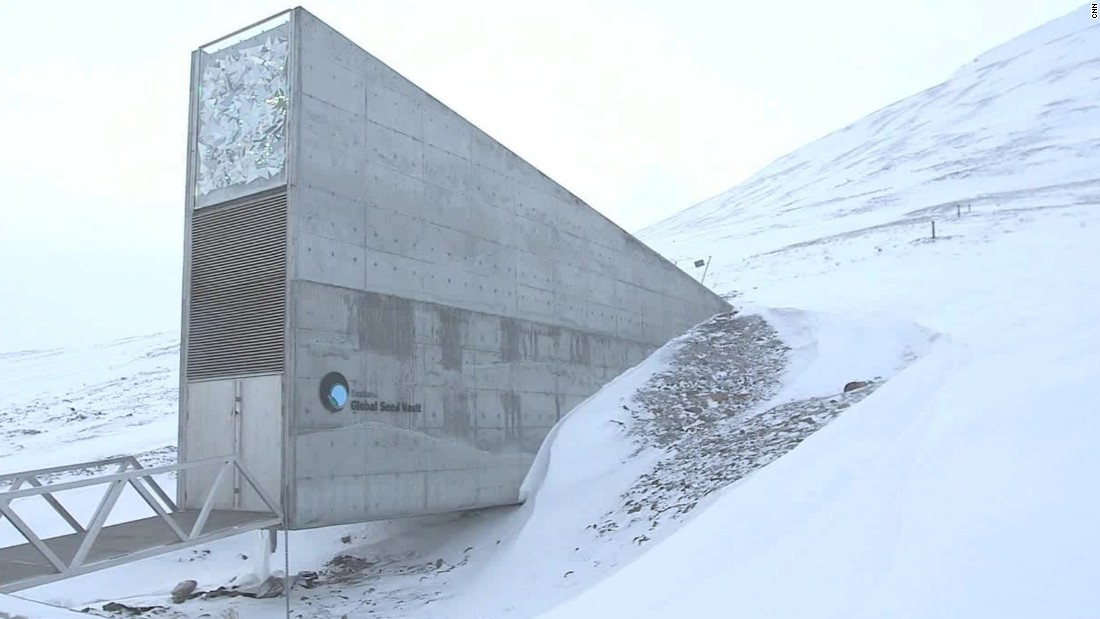

As of 2016, less than 3,000 people called this cold island home. Much of the island is mountainous, with fjords running through. The region isn’t the most welcoming in terms of climate, offering up Arctic temperatures, and a land space covered 60% by glaciers. Along with the Svalbard seed vault, this research facility plays a large role in the current economy of the area. Though once a base for whalers and miners, (with the latter industry still in existence), the area is also big for research facilities, which includes the University Centre in Svalbard. Apart from a few small communities, the area is rather remote, though it does have the designations of both an economic zone, and demilitarized zone. Svalbard (AKA Spitsbergen) is part of the Norwegian archipelago (small island grouping) in the Arctic Ocean, and the only permanently populated of the islands in the region. But there’s one seed vault that is more well known, and it resides on a cold and remote Norwegian island called Svalbard. What’s so special about the Svalbard Global Seed Vault?Įvery country has a variety of seed vaults for different purposes, right? And we don’t usually hear much about them. When plants are stored in these places, it’s done as in vitro storage, freezing parts of the plant, or stocking seeds. Though the term ‘gene bank’ refers to any biorepository for different kinds of genetic material, this applies to plants as well. The idea of these vaults can also be thought of as gene banks. Most any country should have several vaults for some purpose or another. As these seeds represent the ability to continue on in the direst of circumstances, they are often highly protected, in facilities with extreme security measures taken. As such, these vaults need to be kept in the right environmental conditions. This is meant as a fail-safe, and a way to ensure the ability for biodiversity.

At this temperature, we expect many of these seeds to survive for decades before they lose viability.” Seed vaults preserve seeds The temperature of the freezer is –18 degrees C. These seeds are placed in foil laminate bags and heat sealed to moisture-proof the contents. Of the longer-term storage, the site explains, “Seeds being held for ex situ conservation are ultimately placed in the long-term storage freezer. (57 degrees F.) and 22% relative humidity to quickly dry the seeds and keep them dry as seeds are cleaned, counted, and processed for long-term storage.” “Seed banking allows scientists to preserve the genetic resources of plant species so that these species are not lost in the event of a catastrophe.” In reference to the Miller Seed Vault, the largest vault of the Pacific-Northwest, the site explains that its “Reinforced for earthquake protection”, and that the “environment in both the workroom and short-term storage room are maintained at 15 degrees C. As per the site for the University of Washington Botanic Gardens: Think large-scale nuclear war, or something like that. Sometimes they’re to house the seeds used for scientific research, or for sale to consumers, and sometimes they’re seeds put away just in case everything in the world goes wrong, and we’re left to start at the beginning. Seed vaults aren’t uncommon, and are found in many places. A big old vault that contains a bunch of seeds. Get your holiday shopping done here! What’s a seed vault?Ī seed vault – or seed bank – is what it sounds like. Subscribe to our Cannadelics Weekly Newsletter for all important updates and to get first-place access to tons of deals on stuff like cannabis flowers, vapes, edibles, smoking paraphernalia, cannabinoid compounds (including delta-8), and a lot more. So what is this vault for? And what’s inside? Read on to find out. How do we know that? By the existence of something like the Svalbard doomsday seed vault in Norway. If you’re concerned about the environment for example, there’s good reason to have fears. We’re a world of worriers, and rightfully so when it comes to certain things.


 0 kommentar(er)
0 kommentar(er)
